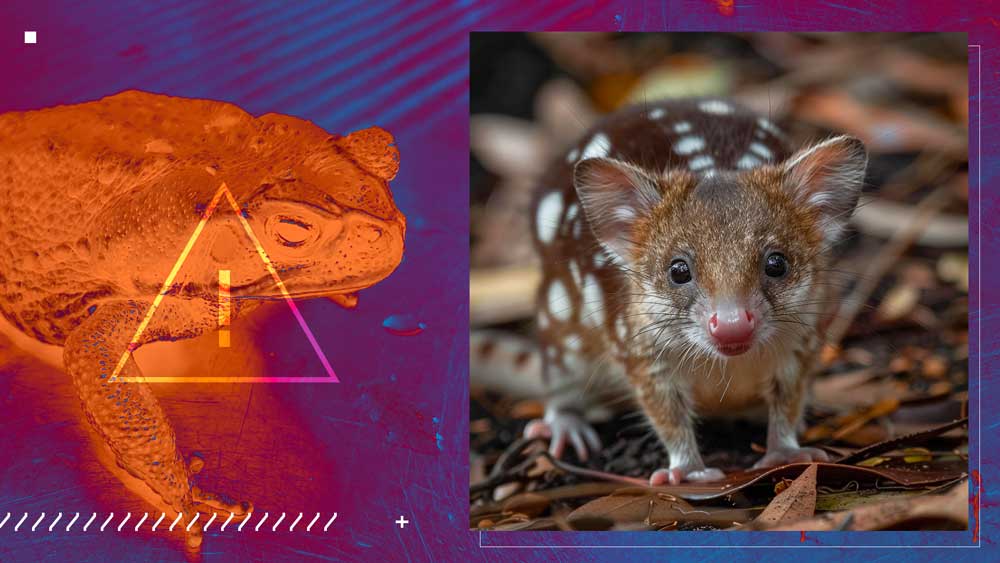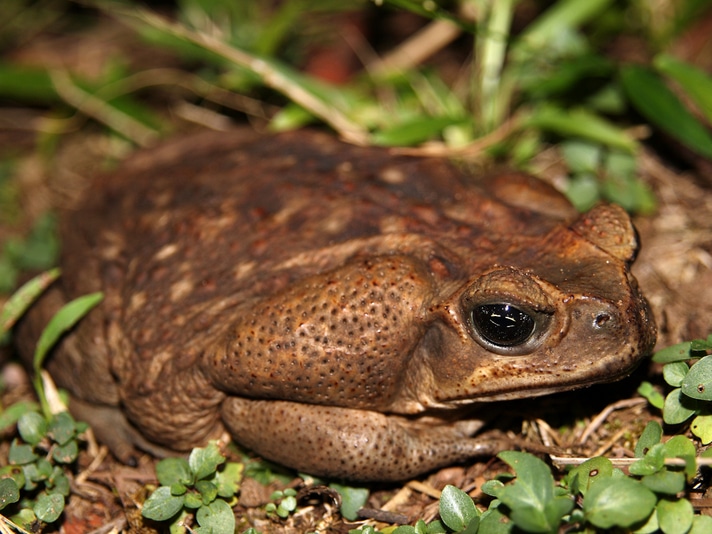Since the introduction of the cane toad in the 1930s, the population of the northern quoll has dropped by 75 percent.
The invasive cane toad in Australia, introduced in 1935 in a failed effort to stop cane beetles from destroying crops, has had a devastating effect on the country’s northern quoll (Dasyurus hallucatus) , a small marsupial that has been dying due to ingesting cane toads (Rhinella marina).
In an effort to stop the northern quoll from becoming extinct, Colossal Biosciences and the University of Melbourne announced that the collaboration has enabled the genetic engineering of the marsupial’s cells that they are hoping will develop a resistance to the cane toad toxin. With the use of Colossal Biosciences’ Thylacine gene-editing technologies, it is hoped that the scientists can grow northern quolls that are resistant to the poisons in the cane toad.

Colossal Biosciences is genetically engineering northern quolls to make them resistant to cane toad toxins.
“To achieve the world-first, the team will next derive induced pluripotent stem cells (iPSCs) from northern quolls, which can be CRISPR-edited to introduce the same genetic resistance, ultimately producing offspring who are cane toad toxin resistant. The offspring of these quolls will inherit this resistance and can then be released to rescue the threatened wild population. That heritable resistance will mean that no further intervention will be necessary to protect the species from the devastating impacts of the cane toad.”
Since the introduction of the cane toad in the 1930s, the population of the northern quoll has dropped by 75 percent as they continued to eat and die of the cane toad toxins.
“We need northern quolls to have a balanced ecosystem in mainland Australia,” Professor Andrew Pask, lead of the Thylacine Integrated Genomic Restoration Research Laboratory at the School of BioSciences at the University of Melbourne said in a prerelease outlining the collaboration. “By using Colossal’s technology we’re giving our conservation partners a fighting chance of succeeding in restoring that balance.”
Toadzilla Cane Toad Found In Australia
Australia’s Victorian Grassland Earless Dragon Gets More Conservation Help
Australia Snake Catcher Records Keelback Snake Dining on Invasive Cane Toad
“We discovered that select gene edits to the quoll could confer natural resistance,” said Dr. Stephen Frankenberg head of the quoll bufotoxin-resistance research team in Professor Pask’s lab, which includes PhD student Mr. Pierre Ibri. “That’s why we have dedicated our efforts to finding out how to save it.”
Cane toads are native to the southern United States and Central and South America but have been introduced to other areas of the world, including islands in the Pacific and Caribbean, and in Australia, where the 16th episode of season 6 of The Simpsons, “Bart versus Australia” prominently featured Bart releasing a bullfrog, which is a direct reference to the introduction of the cane toad in Australia to protect sugar cane from the cane beetle. The cane toad has since become a living ecological disaster in the land Down Under.
They are fatally poisonous to many of the animals that eat them. They complete with native species for food and shelter, and are found in a range of habitats, thought not widely spread in the country’s rainforests. Females can lay up to 30,000 eggs every season, and they grow large, though most are around 1 to 2 lbs.



